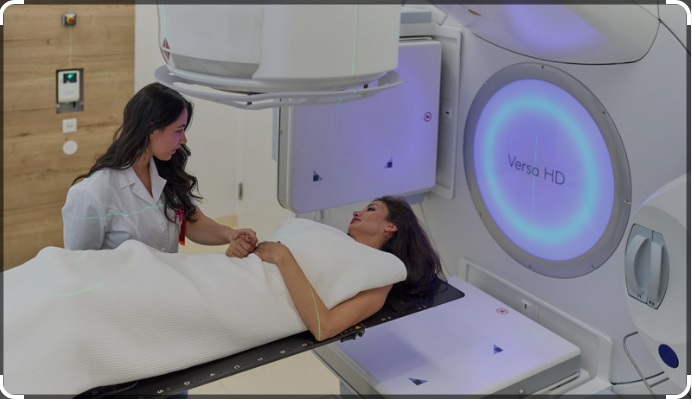
How Radiotherapy Relieves Cancer Pain

The vast majority of people who have booked appointments at our Radiotherapy Clinic in the Vienna Private Clinic Cancer Center have done so in order to take advantage of a highly targeted, specialist treatment that helps to remove lesions and tumours before they can cause harm through growing and spreading.
The stereotactic radiosurgery, for example, is a highly effective targeted radiotherapy treatment that uses a range of focused beams of radiation to destroy tumours with little damage to surrounding tissue.
However, besides treatment, radiotherapy has a number of other purposes, one of which is less about a curative treatment and more focused on palliative care and relieving the pain that can come from more advanced stages of cancer.
Whilst primarily used for helping relieve the pain associated with bone cancer, it can be used to help with the management of other types of cancer induced pain.
How Cancer Causes Pain
To understand how radiotherapy helps with pain relief, it is important to know the reasons why cancer can cause people pain.
When tumors grow, they can start to press against other parts of the body, such as nerves, organ tissue and bones. Another mechanism is when the tumor grows into a tissue (e.g. bone) and by that destroys it and causes there painful inflammation.
With bone cancer, this destruction can lead to fractures and breaks, which can cause agonising pain that compounds the pain caused by cancer in the first place, which can reach the point of being unbearable at more advanced stages. If the destructed bone is within the spine, breaks could even cause paralysation, which is a much feared result from bone metastases and therefore needs swift treatment in order to be avoided.
What Radiotherapy Can Do For Your Relief
Radiotherapy works to reduce pain in similar ways to how it can help reduce or remove cancer at less advanced stages.
It reduces the size of cancer tumours, which stops them from pressing against nerves and other parts of the body, and can in some cases make these tumours more viably treated.
For tumours that press on the spinal cord or have started to obstruct the airway, these can provide significant relief or even become a vital part of treatment.
It can help to heal destructed bones and so prevent bone fractures and palsy.
It can also be used if a cancer is ulcerating and thus causing bleeding by healing cancer caused ulceration and stop the bleeding.
However, it cannot always be used and targeted radiotherapy in the process of pain relief must be mindfully used by an experiences radiation oncologist in order to achieve the necessary relief.
This is also managed by using lower doses and fewer sessions of treatment in palliative radiotherapy than would be used in curative settings since the purpose is to shrink the tumour rather than completely excise it.
It can also be used in combination with other medications and treatments to help relieve pain as well, depending on the type of cancer and how it reacts to different treatments.
Palliative treatment is not intended to cure the cancer, but it is commonly effective at reducing symptoms and allowing a better quality of life as well as a longer life expectancy for people in the advanced stages of cancer.
Source: Amethyst Radiotherapy Vienna

Medical Advisory Dr. David Kuczer
